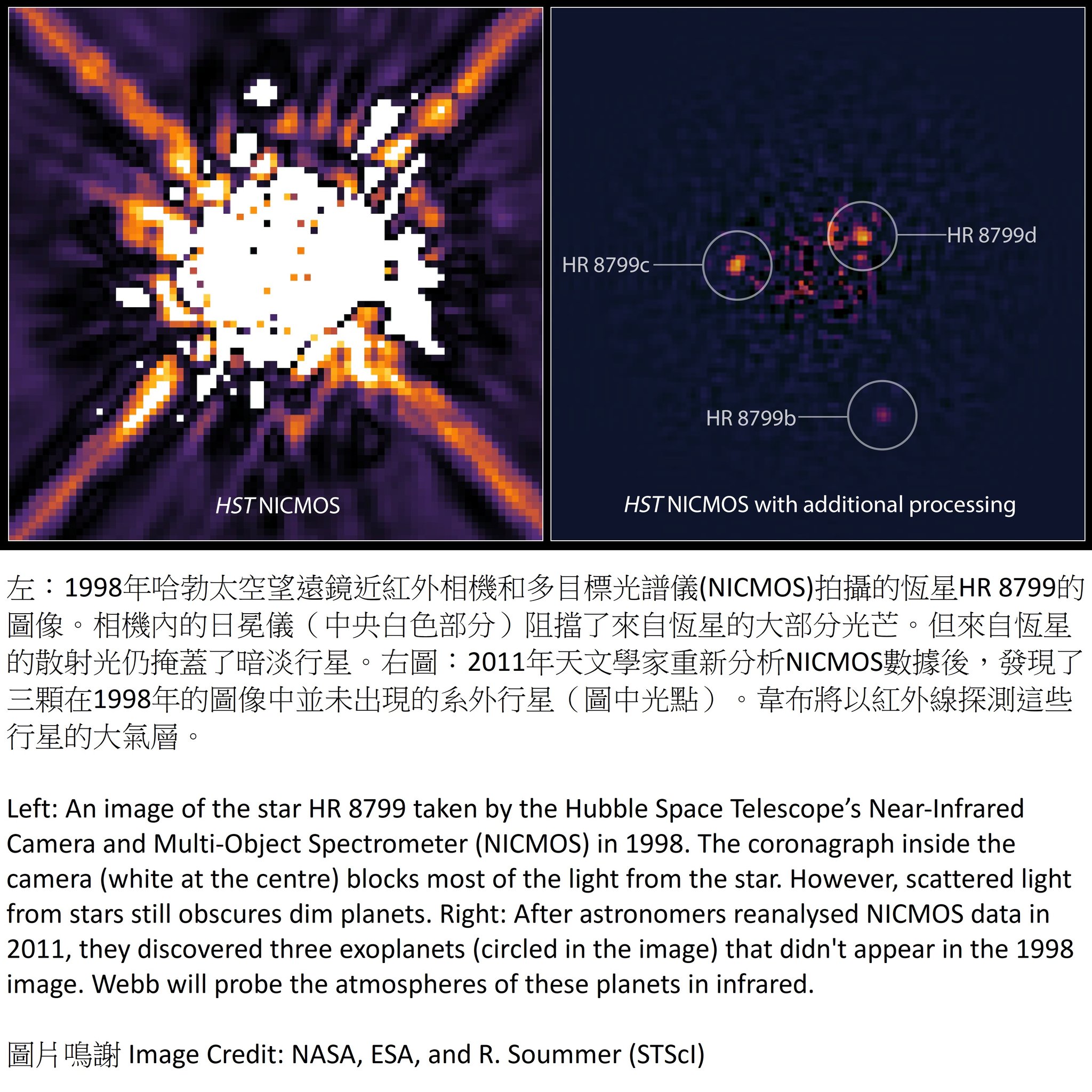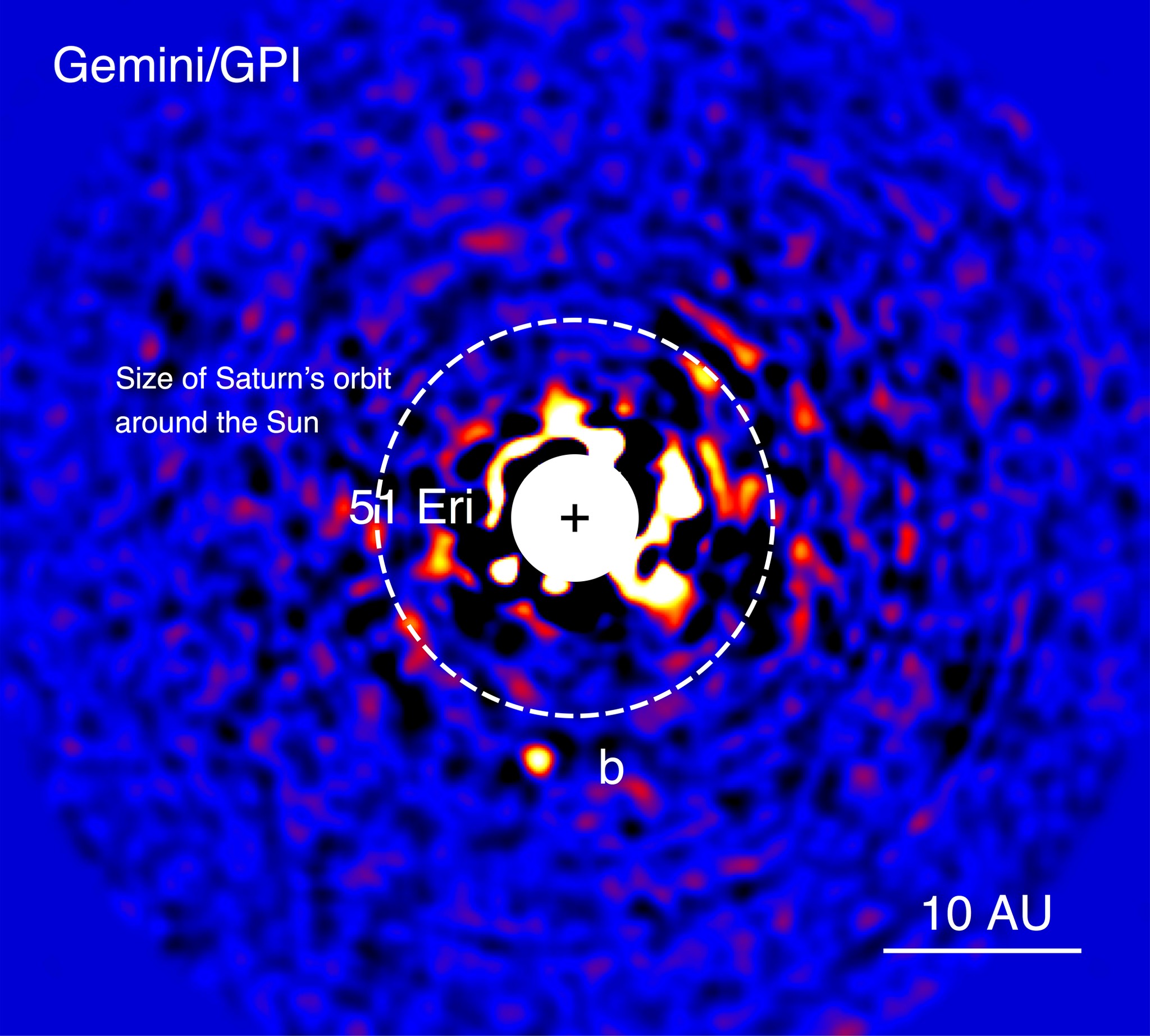The Webb telescope team has recently been working on aligning the mirror segments. By analysing the phase of starlight, the mirror is adjusted by an amplitude of one ten-thousandth the diameter of a human hair to correct the slight height difference between the mirror segments.
Observing distant objects like exoplanets (planets that orbit stars other than the Sun) is not easy because they get lost in the glare of their host star, and watching them is just as difficult as striving to see a firefly circling around a lighthouse.
How to see the fireflies more easily? One way is to block the light from the lighthouse with the palm of your hand.
Astronomers use similar methods to find some of the exoplanets. Webb's "palm" is called a "coronagraph", which blocks the light of stars selectively and makes exoplanets visible.
Astronomers have discovered some very hot exoplanets using specialised imaging techniques, known as LOCI algorithm. After successfully blocking the glare from the star, they found that these hot exoplanets glow strongly in infrared. Webb is expected to observe and directly study some of the exoplanets. For details, please refer to this research article: https://iopscience.iop.org/.../10.1088/0004-637X/694/2/L148





